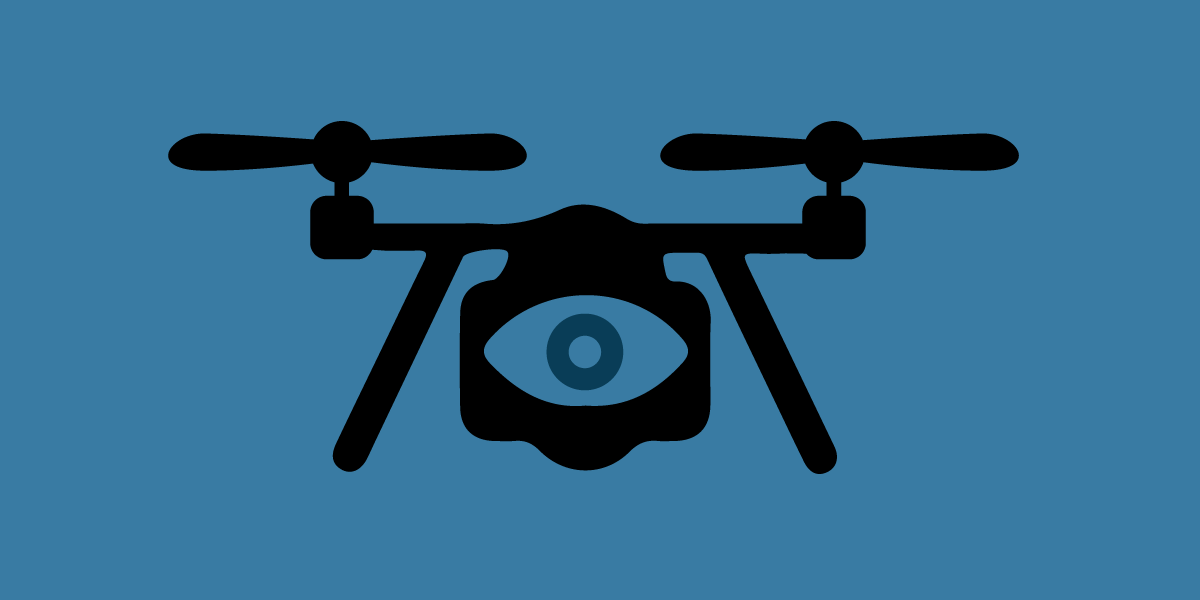This article was originally published by The Legal Aid Society's Decrypting a Defense Newsletter on August 5, 2024 and is reprinted here with permission.
Police departments and law enforcement agencies are increasingly collecting personal information using drones, also known as unmanned aerial vehicles. In addition to high-resolution photographic and video cameras, police drones may be equipped with myriad spying payloads, such as live-video transmitters, thermal imaging, heat sensors, mapping technology, automated license plate readers, cell site simulators, cell phone signal interceptors and other technologies. Captured data can later be scrutinized with backend software tools like license plate readers and face recognition technology. There have even been proposals for law enforcement to attach lethal and less-lethal weapons to drones and robots.
Over the past decade or so, police drone use has dramatically expanded. The Electronic Frontier Foundation’s Atlas of Surveillance lists more than 1500 law enforcement agencies across the US that have been reported to employ drones. The result is that backyards, which are part of the constitutionally protected curtilage of a home, are frequently being captured, either intentionally or incidentally. In grappling with the legal implications of this phenomenon, we are confronted by a pair of U.S. Supreme Court cases from the 1980s: California v. Ciraolo and Florida v. Riley. There, the Supreme Court ruled that warrantless aerial surveillance conducted by law enforcement in low-flying manned aircrafts did not violate the Fourth Amendment because there was no reasonable expectation of privacy from what was visible from the sky. Although there are fundamental differences between surveillance by manned aircrafts and drones, some courts have extended the analysis to situations involving drones, shutting the door to federal constitution challenges.
Yet, Americans, legislators, and even judges, have long voiced serious worries with the threat of rampant and unchecked aerial surveillance. A couple of years ago, the Fourth Circuit found in Leaders of a Beautiful Struggle v. Baltimore Police Department that a mass aerial surveillance program (using manned aircrafts) covering most of the city violated the Fourth Amendment. The exponential surge in police drone use has only heightened the privacy concerns underpinning that and similar decisions. Unlike the manned aircrafts in Ciraolo and Riley, drones can silently and unobtrusively gather an immense amount of data at only a tiny fraction of the cost of traditional aircrafts. Additionally, drones are smaller and easier to operate and can get into spaces—such as under eaves or between buildings—that planes and helicopters can never enter. And the noise created by manned airplanes and helicopters effectively functions as notice to those who are being watched, whereas drones can easily record information surreptitiously.
In response to the concerns regarding drone surveillance voiced by civil liberties groups and others, some law enforcement agencies, like the NYPD, have pledged to abide by internal policies to refrain from warrantless use over private property. But without enforcement mechanisms, those empty promises are easily discarded by officials when they consider them inconvenient, as NYC Mayor Eric Adams did in announcing that drones would, in fact, be deployed to indiscriminately spy on backyard parties over Labor Day.
Barring a seismic shift away from Ciraolo and Riley by the U.S. Supreme Court (which seems nigh impossible given the Fourth Amendment approach by the current members of the bench), protection from warrantless aerial surveillance—and successful legal challenges—will have to come from the states. Indeed, six months after Ciraolo was decided, the California Supreme Court held in People v. Cook that under the state’s constitution, an individual had a reasonable expectation that cops will not conduct warrantless surveillance of their backyard from the air. More recently, other states, such as Hawai’i, Vermont, and Alaska, have similarly relied on their state constitution’s Fourth Amendment corollary to find warrantless aerial surveillance improper. Some states have also passed new laws regulating governmental drone use. And at least half a dozen states, including Florida, Maine, Minnesota, Nevada, North Dakota, and Virginia have statutes requiring warrants (with exceptions) for police use.
Law enforcement’s use of drones will only proliferate in the coming years, and drone capabilities continue to evolve rapidly. Courts and legislatures must keep pace to ensure that privacy rights do not fall victim to the advancement of technology.
For more information on drones and other surveillance technologies, please visit EFF’s Street Level Surveillance guide at https://sls.eff.org/.













